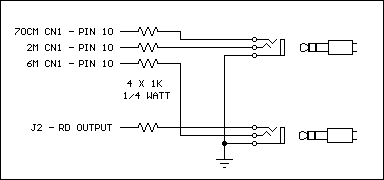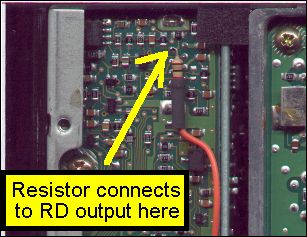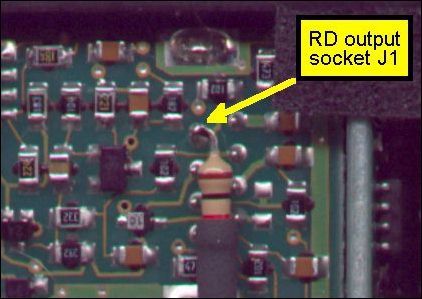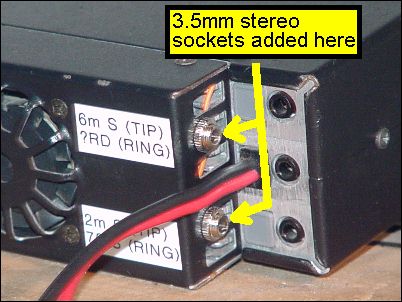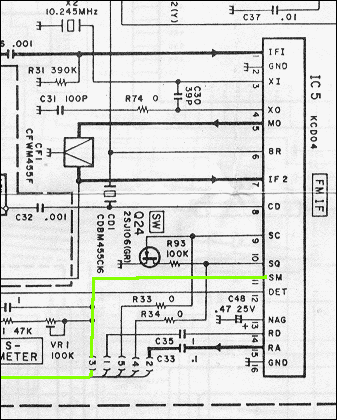
on the 144 MHz band module |
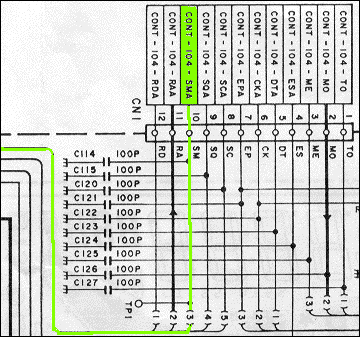
The signal meter voltage is present on pin 10 of CN1 for all of the band modules. As the CN1 connector is in the same place, this method can be used with all modules. |
The signal meter (SM) voltage can be accessed from the underside of the board at pin 10 of the CN1 connector. I have added a 1k 1/4 watt resistor in series with the voltage to offer some isolation between the radio and the outside world. You can see where the resistor is soldered in this picture.
|
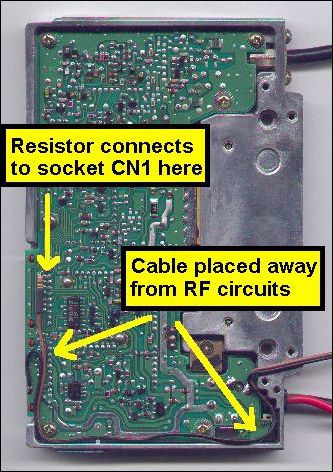
|

